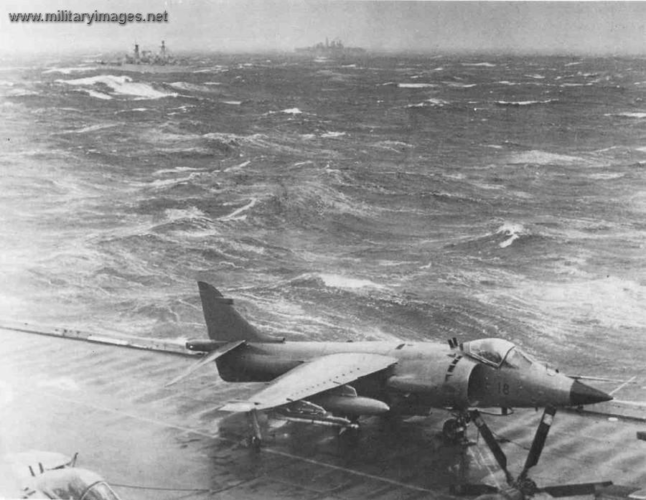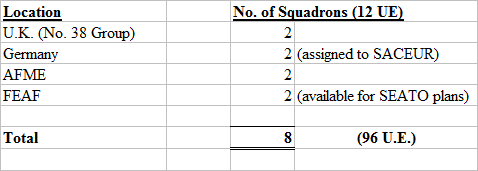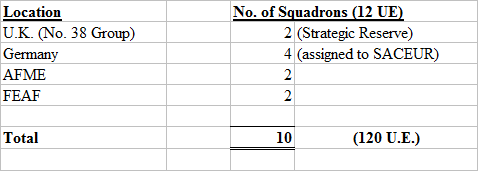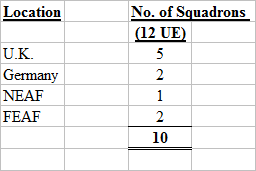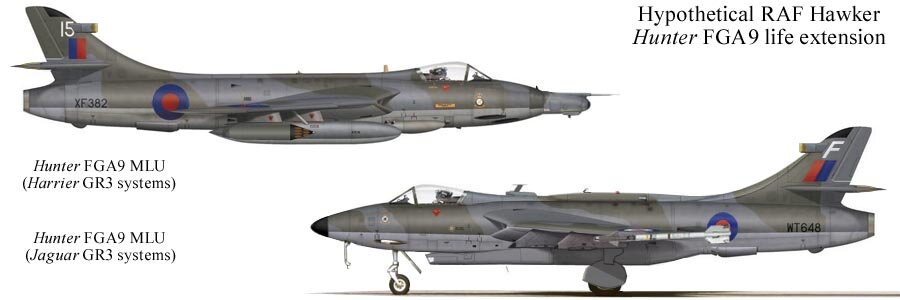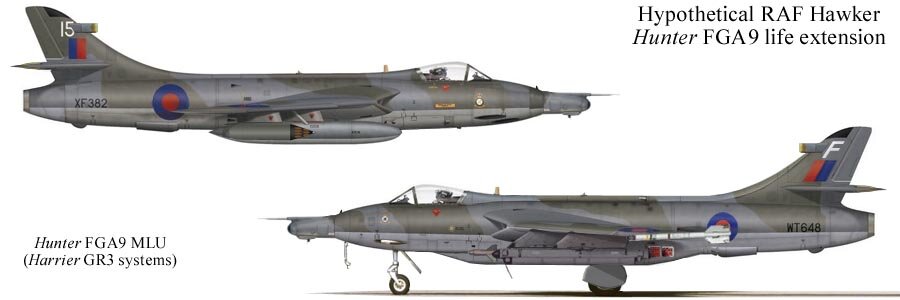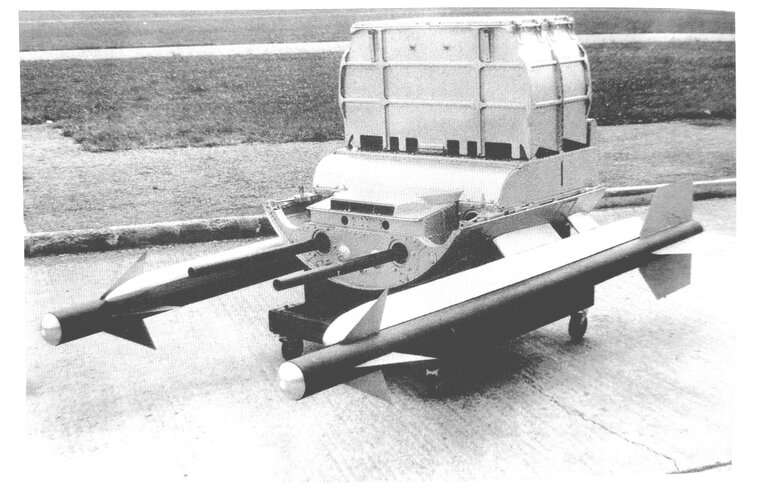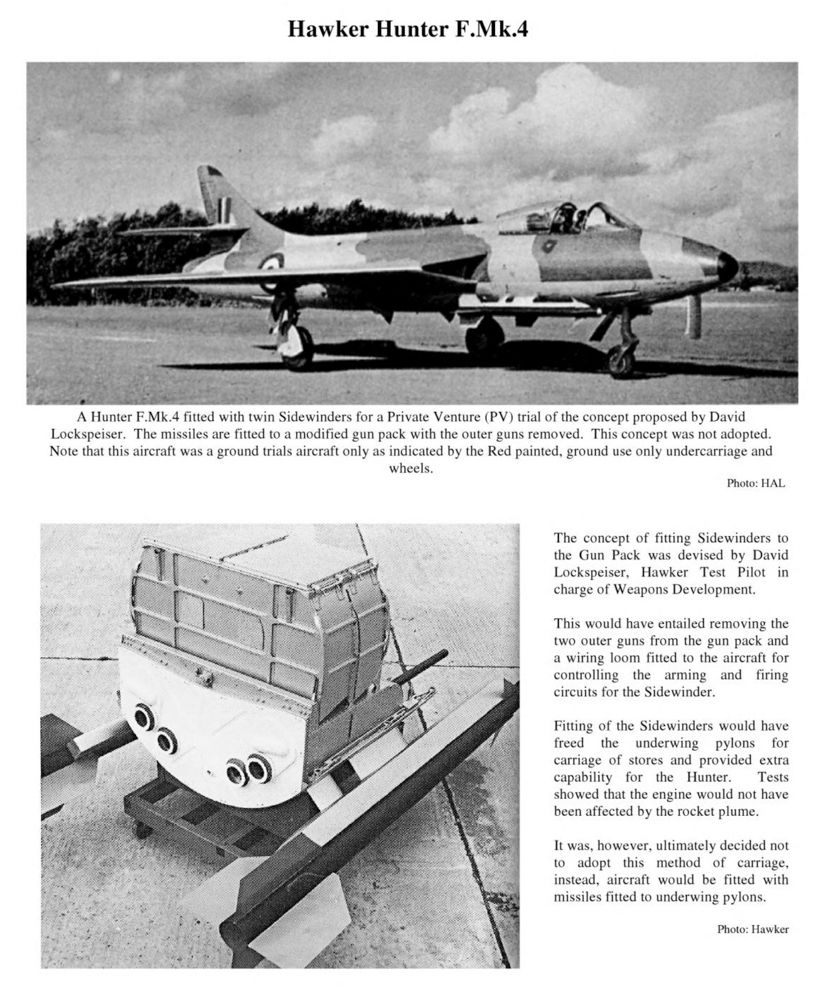In RAF Germany the Harrier was the Hunter replacement.
For what it's worth...
According to Plan P (which ran from 31st March 1964 to 31st March 1975) RAF Germany had 138 aircraft in 12 squadrons at the end of March 1964 as follows:
12 Canberra B(I) Mk 6 in one light bomber squadron (No. 213)
36 Canberra B(I) Mk 8 in 3 light bomber squadrons (Nos. 3, 14 and 16)
30 Canberra PR Mk 7 in 3 tactical reconnaissance squadrons (Nos. 17, 31 and 80)
32 Javelin FAW Mk 9 in 2 fighter squadrons (Nos. 5 and 11)
16 Hunter FR Mk 10 in 2 fighter reconnaissance squadrons (Nos. 2 and 4)
12 Whirlwind HAR Mk 10 in one short range transport squadron (No. 230)
I've added the squadron "number plates" which weren't in the original document.
According to Rawlings in the History of the Royal Air Force (P.270) the main duty of the Canberra light bombers was delivering nuclear weapons. However, they could also be converted rapidly to the ground attack role in which they employed air-to-ground gun firing and shallow dive-bombing techniques.
There was also a tactical reconnaissance squadron of 10 Canberra PR Mk 10s in Malta which was NATO assigned. It was originally formed at Laarbruch in Germany as 69 Squadron in October 1954 on Canberra PR Mk 3s. It remained at Laarbruch until April 1958 when the squadron moved to Luqa, Malta. It became 39 Squadron on 1st July 1958 and converted to the Canberra PR Mk 9 in October 1962. The squadron moved to Wyton in September 1970 and remained there until disbanding on 1st June 1982. [The squadron's history is from RAFWEB.] Therefore, I think its NATO assignment in March 1964 was to reinforce RAF Germany.
This would reduce to 101 aircraft in 9 squadrons by 31st March 1974 as follows:
24 TSR.2 in 2 strike squadrons
16 TSR.2 in 2 tactical reconnaissance squadrons
24 Lightning F Mk 2A in 2 fighter squadrons
24 P.1154 in 2 fighter reconnaissance squadrons
13 Wessex HC Mk 2 in one short range transport squadron
There would be no change until then and 31st March 1975.
No. 39 Squadron would still be at Malta on 31st March 1975 and would still have 10 Canberra PR Mk 9s. The TSR.2 was due to replace the Canberra in the tactical reconnaissance squadrons in Germany in the period from 1st April 1968 to 31st March 1970. Therefore, my guess is that at the end of the 1960s its NATO assignment would change from reinforcing RAF Germany to something else.
According to Rawlings (Page 271) RAF Germany's front-line strength at early 1972 was:
2 Buccaneer S Mk 2B strike squadrons (Nos. 15 and 16)
2 Lightning F Mk 2B fighter squadrons (Nos. 19 and 92)
1 Phantom FGR Mk 2 reconnaissance squadron (No. 2)
3 Phantom FGR Mk 2 ground attack squadrons (Nos. 14, 17 and 31)
3 Harrier GR Mk1 and GR Mk 1A ground attack squadrons (Nos. 3, 4 and 20)
1 Wessex HC Mk 2 short range transport squadron (No. 18)
That's the same number of squadrons as at 31st March 1964 except there were 2 strike squadrons instead of 4 light bomber squadrons, the number of reconnaissance squadrons was reduced from 5 to one and there were now 6 ground attack squadrons when there had been none 11 years earlier.
Except that RAFWEB and Lake's Flying Units of the RAF say that 16 Squadron operated Canberras until disbanding on 6th June 1972 and it wasn't reformed on Buccaneers until 8th January 1973 having commenced training from 1st October 1972 as 16 Squadron (Designate).
That glitch aside, this was RAF Germany's front-line on 31st March 1974 and 31st March 1975.
Unfortunately, Rawlings didn't say what the number of aircraft per squadron was or what the total number of first-line aircraft was. However, if the Wessex squadron had 13 aircraft and the other squadrons had 12 aircraft each the total would be 145 aircraft.

